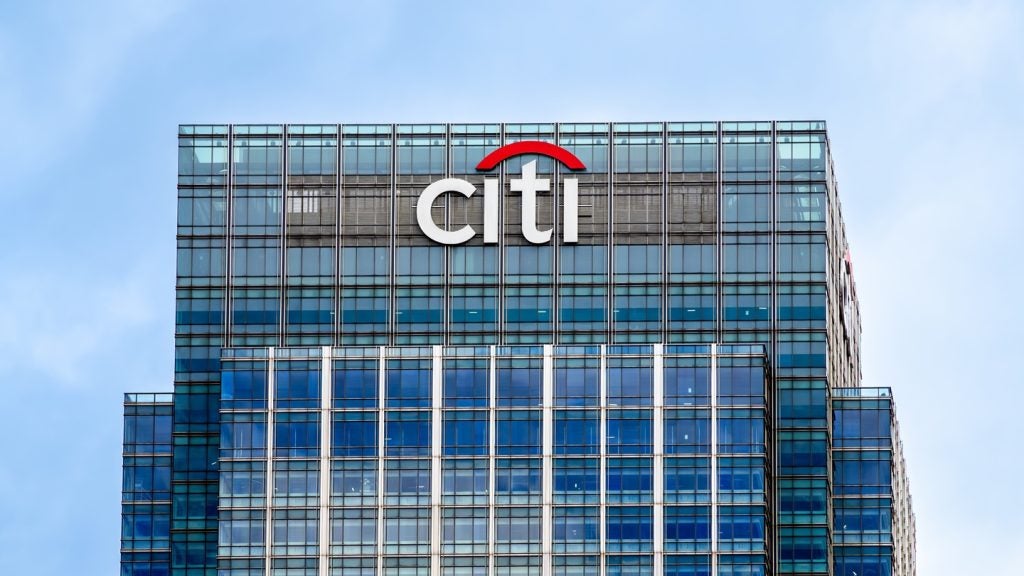Can card issuers turn loyalty programme costs
into a revenue generating operation? Just how strong is the case
for what are increasingly referred to as merchant-funded reward
programmes? Research from Celent suggests that it is an area
offering huge potential with impressive success stories already in
the bag

Access deeper industry intelligence
Experience unmatched clarity with a single platform that combines unique data, AI, and human expertise.
Advisory firm Celent has conducted interesting
and worthwhile research on the current state of the merchant-funded
rewards market.
Released in August, the report: Can Card
Issuers Turn Loyalty Programmes into Revenues: A Case for
Merchant-Funded Rewards Programmes considers the current state
of the market and considers its likely future direction.
Typically, merchant-funded rewards (MFR),
offers and incentives are so called as they are funded directed by
the merchant as opposed to financial institutions.
Such programmes tend to be targeted to
specific segments of customers, usually based on the customers’
payment transaction history.

US Tariffs are shifting - will you react or anticipate?
Don’t let policy changes catch you off guard. Stay proactive with real-time data and expert analysis.
By GlobalDataThe offers are however through via the
financial institutions’ channels, from online and mobile banking to
email to bank-branded online offers.
Other features include linking the programme
to the card, so that the offers are ‘linked’ to the card and
redeemed automatically for qualifying transactions. There is no
need to change any merchant POS systems and the merchant does not
even need to know about the offer.
The customer usually pays a full amount at the
checkout and receives appropriate credit later. The account can be
credited in real time, but more typically it happens after a few
days.
While there are many players in the market
that bring merchant-funded offers directly to customers (such as
Groupon), Celent’s research focused on third party vendors which
manage merchant relationships and provide technology platforms to
banks and other financial institutions to bring merchant offers to
cardholders.
According to Celent, MFR platforms offer a
“win-win-win” solution with clear benefits to merchants, banks and
consumers.
There is of course a familiar
‘chicken-and-egg’ problem – merchants are not going to re-direct
large portions of their marketing budgets to these programmes until
they are able to reach a broad base of consumers; and banks will
not see much value in the programmes unless the merchants
participate with relevant and meaningful offers.
The MFR market has, to date, been concentrated
in the US. While the US will continue to be the cornerstone of the
market for the foreseeable future, there are signs that other
markets, particularly Canada, the UK and some countries in Latin
America, are beginning to explore the opportunities to adopt MFR
platforms.
The case for MFR
For merchants, the business case for MFR
platforms is relatively straightforward. They have no upfront costs
as none of the platforms charge merchants for participating in the
programme, and none require much in the way of technology
integration.
In order to “get going”, merchants only need
the time and effort to engage with the platform providers,
understand their proposition, design the desired campaigns and
structure appropriate offers.
 In
In
terms of ongoing costs, all platforms operate on a
‘pay-per-performance’ principle, where the merchants only incur
costs when the customers redeem the offers.
This compares favourably with many other
promotion channels where costs have to be incurred upfront (eg TV
advertising) with no guarantees of (or ability to measure) specific
results.
Ability to target customers is another must
for the merchants, and most MFR platforms have invested heavily in
data analytics and offer matching engines.
According to the numbers reported to Celent by
MFR platform providers, collectively they have nearly 70,000
merchants participating in their programmes today and the numbers
are growing.
The sector is driven primarily by two platform
providers, Truaxis and Affinity Solutions, both of whom report
large merchant portfolios of 39,000 and 25,000 entities
respectively.
However, Truaxis’ number includes merchants
sourced through affiliate relationships. Cartera reported working
with 3,000 merchants, although through partnerships it has an
additional 80,000 local deals.
Cardlytics said it had 2,000 merchant
relationships, but it was rapidly growing that number and was
expected to have signed-up 5,000 merchants by the end of the
year.
The other two providers surveyed, edo
Interactive and FreeMonee have smaller numbers (over 200 and 100
merchants respectively), and are currently focused on the
relationships with large national merchants.
Nearly a third of merchants participating in
the MFR programs are restaurants – see pie chart. Other large
individual merchant categories include department stores and
hotels/ travel representing 18% and 11% of merchants
respectively.
The Other category (23%) includes a broad
range of sectors, such as entertainment, sporting goods, specialty
retail, florist/ gifts, book stores, discount stores, etc.
Supermarkets tend to have low margins and are
not the best sector to target with MFR-type solutions.
Celent believes MFR programmes are still in
the relatively early merchant adoption stage. Major national
merchants and many online retailers seem to have a strong
understanding of MFR, but local merchants are just beginning to
gain awareness of this marketing opportunity and more education is
necessary.
According to Celent’s survey of MFR platform
providers, lack of a proven business case remains the biggest
barrier to MFR merchant adoption.
The case for MFR for
banks/consumers?
Celent argues that the case for financial
institutions is very much about both ‘hard’ and ‘soft’ dollars. On
the cost side, all platformmes require some level technical
integration and effort upfront to implement the programme, such as
making decisions on the card portfolio, marketing, branding,
customer privacy, legal and other issues.
However, the benefits can be attractive. MFR
programmes promise the issuers to help:
- Reduce costs of their traditional loyalty programmes by getting
merchants to fund the offers and rewards; - Increase revenue directly from the programme through success
fee sharing arrangements and from increased spend on the card (more
transactions and higher spend) driving increased interchange; - Retain and attract customers;
- Retain existing customers by increasing customer satisfaction
and loyalty; - Increase customer engagement with the bank’s digital channels,
presenting more opportunities to cross-sell other bank
products; - Attract new customers through positive image and
‘word-of-mouth’.
Celent reports that almost all of the top 10
card issuers in the US are either implementing or have already
launched an MFR programme with at least one of the vendors.
Between 2010 and 2011, the percentage of debit
issuers in the US offering merchant-funded reward programmes
increased from 25% to 38%.
Prior to undertaking the research, there was
an assumption that banks would be more likely to settle on a single
provider to minimise technology, branding and other potential
issues, such as the risk of overloading consumers with too many
messages and offers.
The report argues that these issues can be
overcome, and working with multiple providers can be particularly
helpful in the following situations:
- When the issuer wants to differentiate the programmes for
different card portfolios (eg. basic debit card versus premium
credit card); - When the platforms bring complementary merchant
relationships; - When the platforms bring complementary capabilities, such as
different offers (e.g. traditional discounts versus cash gifts),
customer engagement channels (e.g. online banking integration vs
‘offer mall’) or redemption capabilities (e.g. real-time credit
versus delayed credit).
The report contends that MFR programmes
deliver on the cost side. Usually, they are relatively
straightforward to implement and typically take from between four
to eight weeks (e.g. Truaxis, FreeMonee) to up to four months (eg
edo, Cardlytics).
Many platform providers charge no fees for
implementation, so the only costs to banks are the internal project
resource costs.
Failure by banks to allocate more shelf space
and funds to market and promote MFR programmes is one of the
reasons why issuers are yet to see meaningful revenue growth
resulting from these programmes. All platform providers charge a
success fee to the merchants and most share a portion (up to 50%)
of that fee with the bank. As the customers engage with the
programme and redeem merchant offers, banks stand to benefit
directly from these revenue sharing arrangements.
According to MFR vendors take on barriers for
banks adopting MFR programmes, competing project priorities was
cited as the number one barrier, examples being regulatory changes,
re-designing products and channels, and upgrading the
infrastructure.
Own loyalty programmes were not seen as a
barrier, as MFR can help enhance the existing loyalty
programmes.
Similarly, “implementation complexities” was
not seen as a barrier, which is certainly true in most cases,
although as discussed above, limitation of the existing technology
infrastructure may at least scale down some of the MFR programme
ambitions.
Future growth
Celent argues that the MFR market is poised
for growth and many more banks will choose to implement MFR
programmes over the next few years.
MFR may not necessarily become “table stakes”,
but for many banks it will be a sensible and cost effective way to
deliver value to cardholders.
It is also likely to serve as a defensive
measure against some of the players, such as PayPal and Google,
which today threaten to dis-intermediate the banks from their
relationships with the high-street merchants.
Finally, the growth will not be limited just
to the US market, as banks in other markets will want to bring MFR
programme benefits to their cardholders, and the platforms will be
keen to follow the market demand.
It will be very interesting to see if it is
indeed a trend that gains favour in countries such as Canada, the
UK and parts of Latin American.







